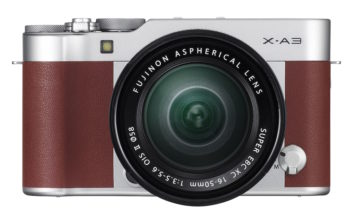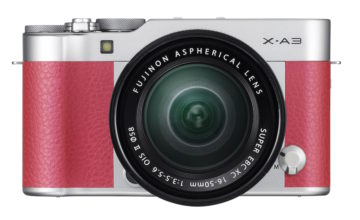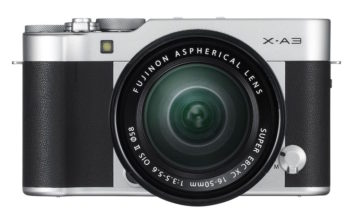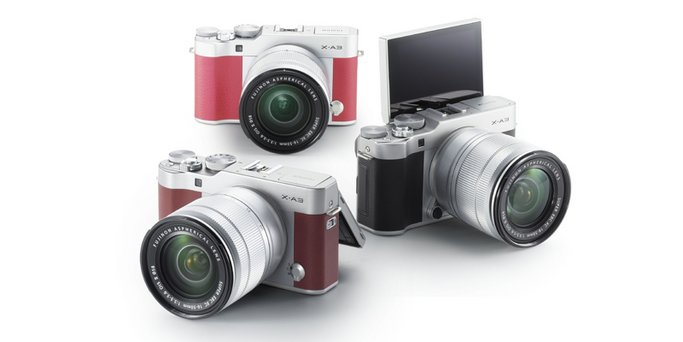
As the various rumours predicted, today saw the announcement of a brand new entry-level model from Fujifilm, the X-A3. Compared to its predecessor, the X-A2, there are a number of differences including a new design, a new sensor and touch screen capabilities.
The new X-A3 has an updated design with a retro feel. The top cover, front cover and dials are all made of aluminium and the faux leather that covers the body is available in black, brown and pink.
There is no weather sealing which doesn’t come as a surprise given the entry-level target of the camera. There are two command dials (front and rear) to quickly change the aperture or shutter speed and a number of function buttons to which you can assign other settings.
The X-A3 features a new 24.2 MP sensor, which is a good upgrade in comparison to the 16MP resolution of the X-A2. However it would be wrong to assume that the new sensor is the same as the one found inside the X-Pro2 and X-T2. The camera uses a traditional CMOS sensor with a Bayer filter mosaic instead of the proprietary X-Trans array. The same decision was made for the X-A2 and X-A1 before it. The ISO sensitivity has native range of 200 to 6400 ISO and extended values of 100 (Pull) and 12800 / 25600 (Push). Auto ISO 1, 2 and 3 modes are also available.
You will find many of the popular film simulation modes including Classic Chrome, Pro Neg standard, Pro Neg Hi and Monochrome with three colour filter variations (Yellow, Red and Green). Sadly the recent Acros profile has not been included.
The autofocus system is based on contrast detection with 49 areas. You can select a Single Point, Zone AF (3×3, 5×5, 7×7 grid) and Wide/Tracking AF up to 9 areas with continuous shooting speeds between 6fps and 3fps. The camera also inherits some functions from its high-end siblings such as Release Priority, Focus Priority, AF+MF and interlocking of Metering and AF areas.
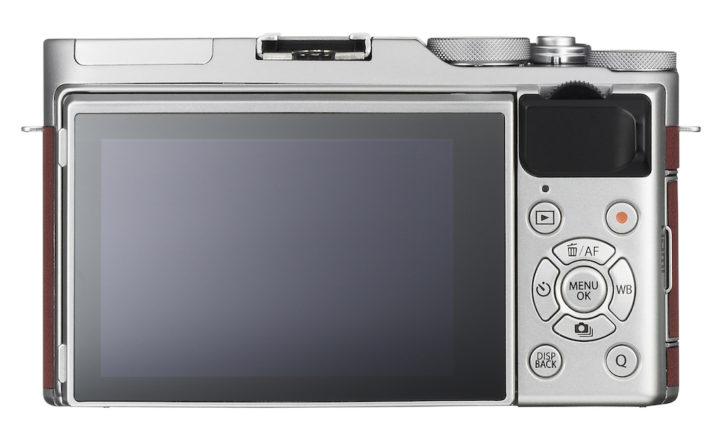
The rear monitor is a 3.0 inch LCD screen with 1040k dots of resolution. It can be tilted down 45° and up 180°. The latter can activate a number of options to facilitate self portraits including Portrait Enhancer (with three-step adjustments), Eye Detection and Self Timer (Smile Detection, Buddy Timer and Group Timer modes). The camera is designed so that you can see 100% of the screen when it is flipped up 180°. You can use the vertical command dial on the rear to take a picture, which is handy for selfies.
The LCD is touch sensitive: you can take a picture or select a focus point by touching the screen with your finger. The new Touch Zoom option lets you operate a digital zoom (pinch-out finger gesture) even if you are using a prime lens.
The X-A3 can record video in 1080p up to 60fps with a limit of 14 minutes per clip (27 min if you record in 720p). You can select any of the Film Simulation Modes for video. The camera also has an image stabilisation system that combines electronic stabilisation with the optical stabilisation of the lens to reduce shake when recording video. Fujifilm calls it 5-axis stabilisation which is rather misleading.
Among other features you will find Advanced Filters (Toy Camera, Miniature, etc.), RAW conversion, Bracketing modes, Panorama mode, Timelapse and a built-in flash (max 1/180s). The electronic shutter allows you to shoot up to 1/32000s while the mechanical limit is 1/4000s.
The camera includes Wifi capabilities and can be used in conjunction with your smart device or an Instax printer.
The battery should guarantee 410 frames per charge and can be charged via USB in the camera directly. A proper battery charger is not supplied. The camera comes in a kit with the XC 16-50mmF3.5-5.6 OIS II zoom lens that can focus at approximately 7cm from the front edge of the lens, which makes it useful for macro shots.
The X-A3 will be available in September at the suggested retail price of $599, €599 and £599. Below you can find a few official image samples.




